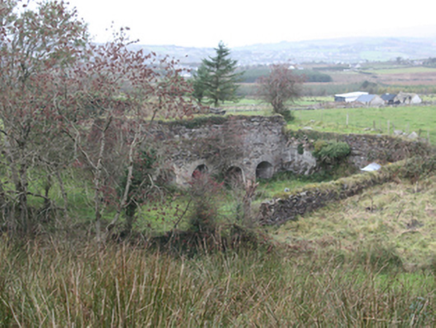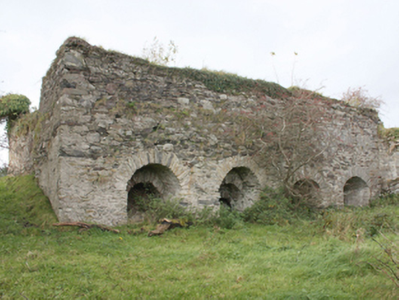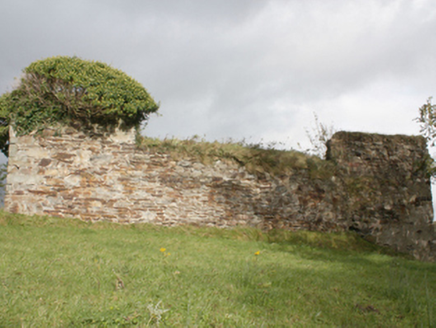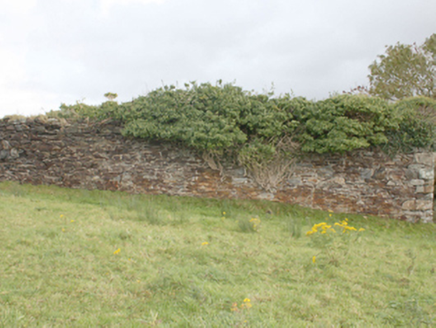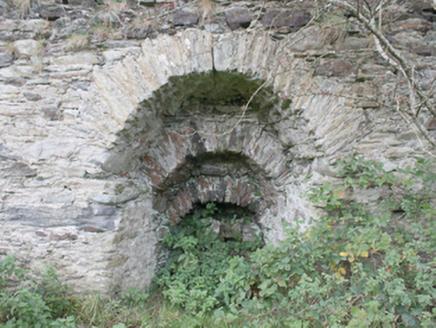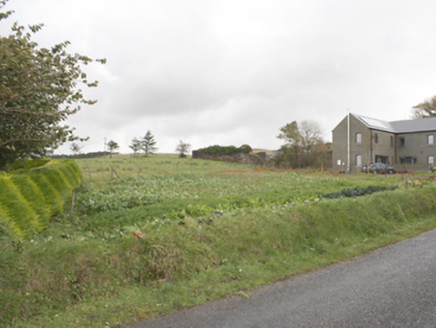Survey Data
Reg No
40902933
Rating
Regional
Categories of Special Interest
Architectural, Social, Technical
Original Use
Kiln
Date
1840 - 1880
Coordinates
237546, 431857
Date Recorded
22/10/2008
Date Updated
--/--/--
Description
Freestanding four-bay lime kiln, built c. 1860, no longer in use. Random coursed rubble stone walls. Four elliptical arches to east side with roughly dressed rubble stone voussoirs. Sited back from road, in field and set into natural slope from north to south. Rubble stone boundary wall with remains of single-storey lean-to corrugated-metal roofed concrete block structure to the north-east corner. Earthen embankment to rear, formerly giving access to loading chambers. Set back from road in rural location to west of Buncrana.
Appraisal
This interesting and substantial former lime kiln, erected by the local landlord during the second half of the nineteenth-century, survives in good condition and retains its early character. It is well-built using local rubble stone masonry and is an appealing and unassuming element of the agricultural\industrial and social heritage of County Donegal The embankment to the rear was built/modified to allow for the easy loading of stone through openings in the roof structure, while the apertures to the front was used to fire the oven to burn the stone and produce lime. Lime kilns appear to have come into popular use in Ireland during the eighteenth century and were a very common feature in the rural landscape up until the first decades of the twentieth century. They were used to burn limestone to produce lime, which was used as an agricultural fertilizer and spread on agricultural land, or in construction as a mortar and a render. Lime was also used for lime-washing buildings, particularly farm buildings, as it was regarded as a cleansing agent at the time. The scale of this lime kiln indicates that it was an industrial process rather than a kiln producing lime for a single local farmer etc. Rural lime kilns started to go out of common usage during the late nineteenth-century with the advent of industrial-scale lime production facilities and improvements in the transport network, particularly the development of the railways. This simple feature is an interesting feature in the landscape to the west of Buncrana, and is one of the most impressive examples of its type still extant in Donegal.
